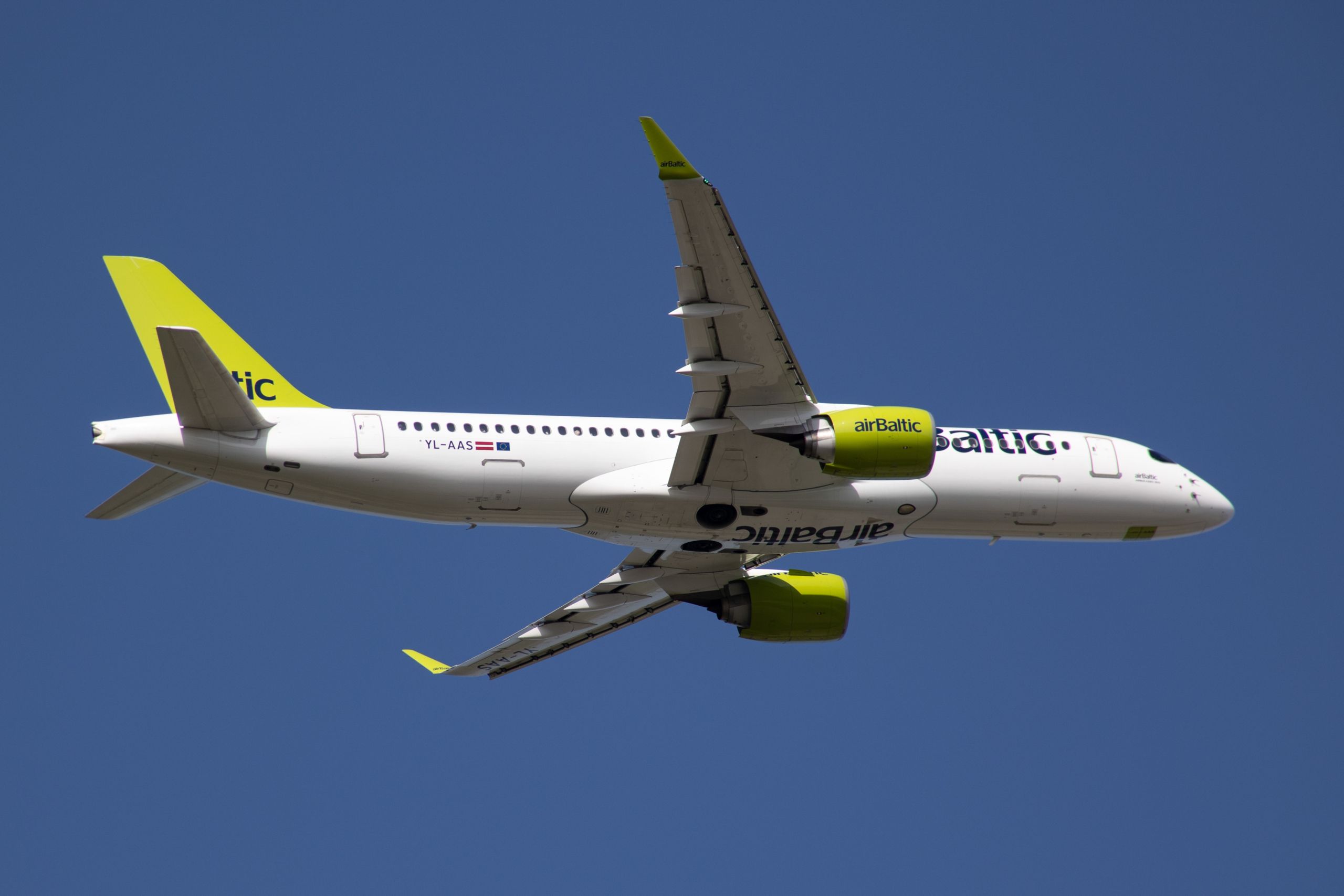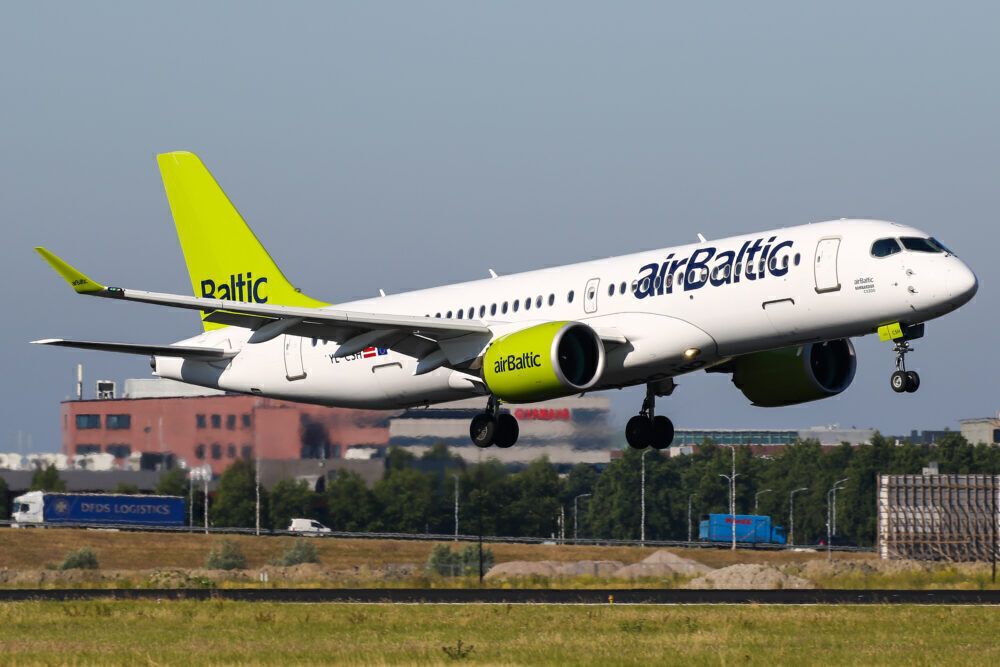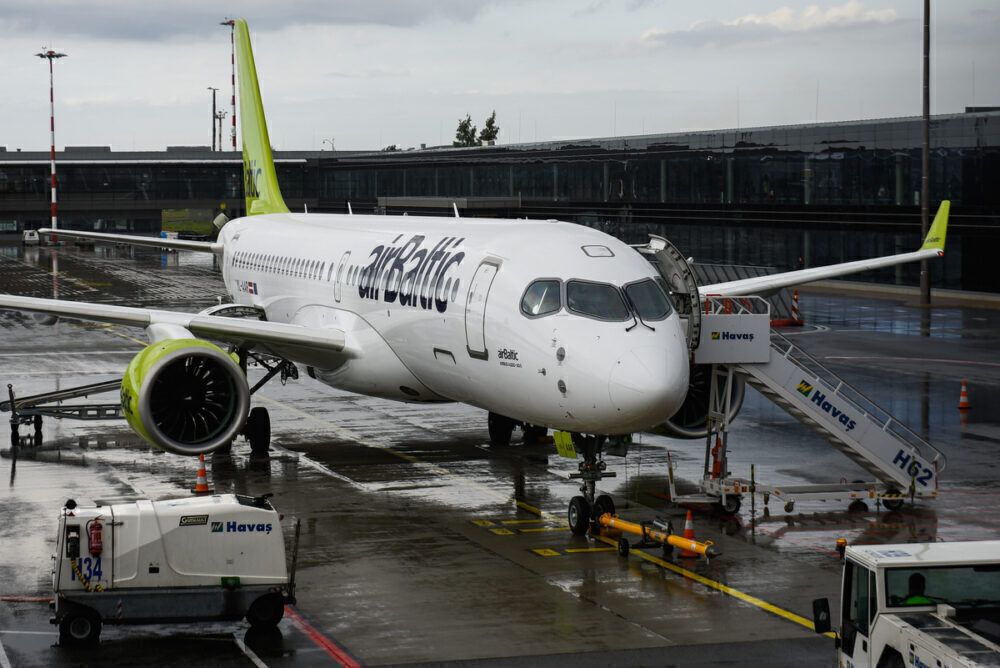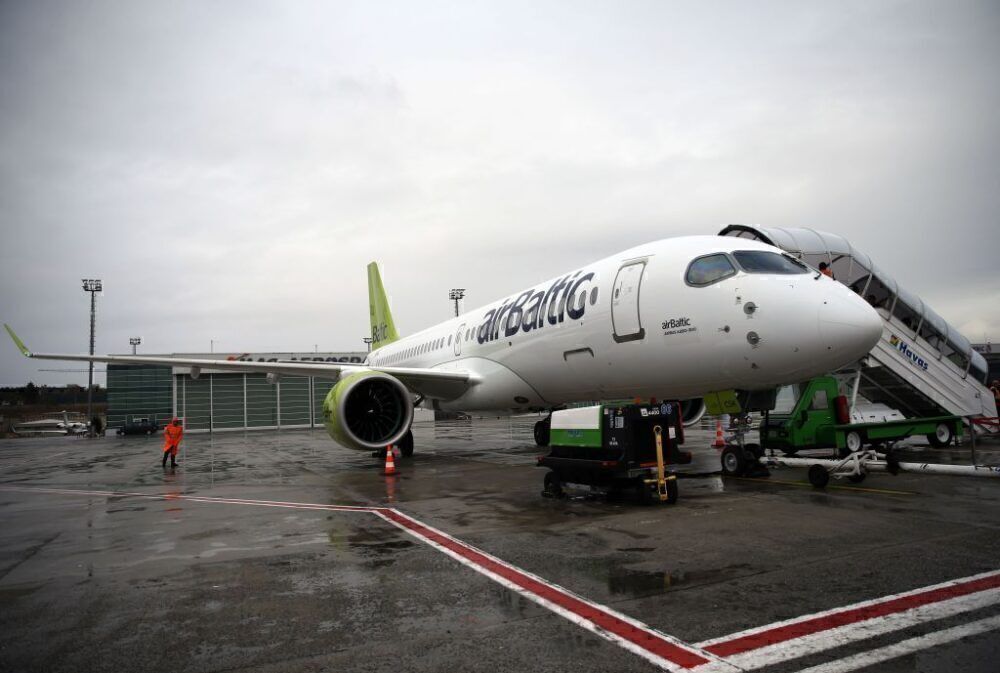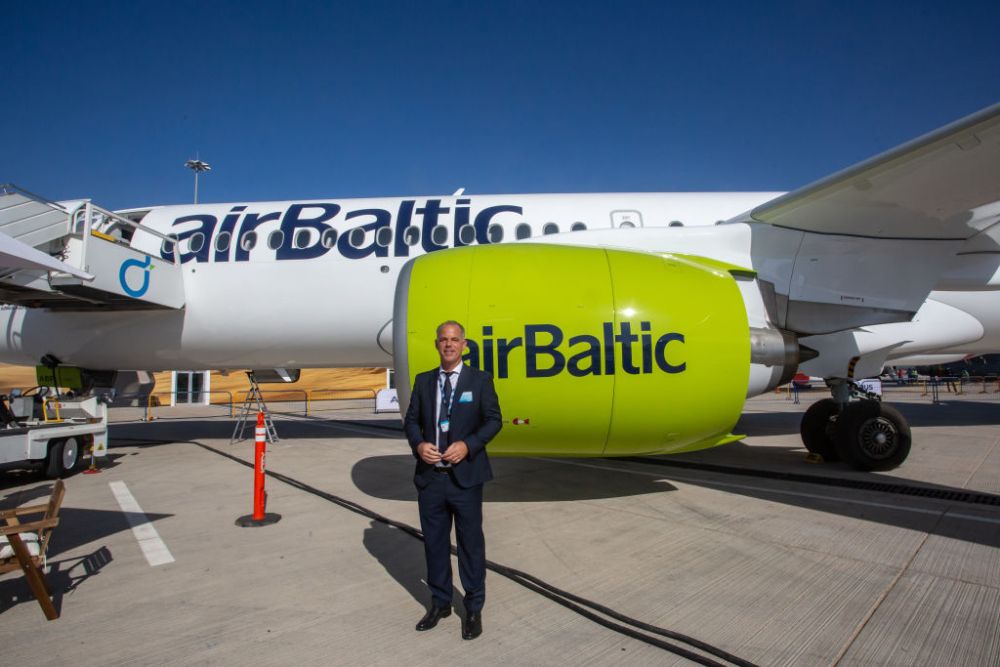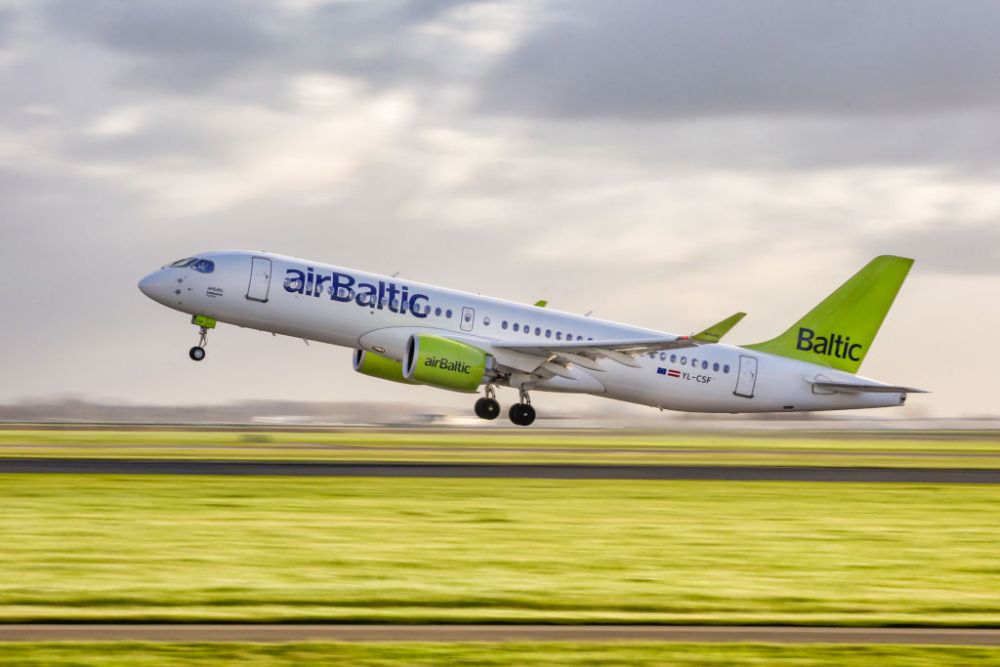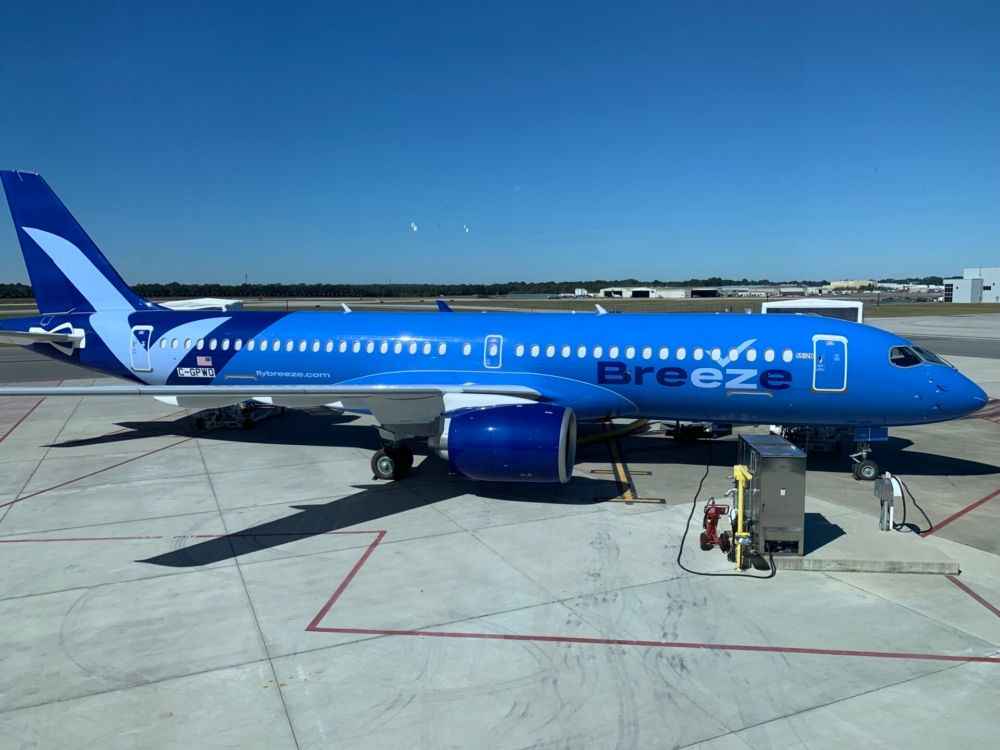Latvian flag carrier airBaltic operates a fleet that consists solely of Airbus A220-300s. While this setup is presently very uniform, the airline is open to the idea of stretched or long-range versions of the twinjet. Simple Flying recently had the chance to catch up with airBaltic CEO Martin Gauss, who shared his thoughts on such modifications.
airBaltic's present fleet
Let's take a look by establishing the nature of airBaltic's present fleet. The Latvian flag carrier solely operates the Airbus A220-300, of which data from ch-aviation.com shows it currently has 32 at its disposal. Of these, 29 are active, with the other three in storage at its Riga hub. airBaltic has previously flown turboprops, as well as jets like the Boeing 737 and 757.
The Airbus A220, which began life as the bombardier CSeries, has only been in service for just over five years, since being introduced by SWISS in July 2016. As such, being an all-A220 operator, airBaltic's aircraft have an incredibly young average of just 2.6 years old. The Latvian flag carrier received its first example of the type (YL-CSA) in November 2016.
The Airbus A220 has won acclaim from airlines and customers alike for its high onboard comfort levels. Key factors in this have been its large windows and five-abreast (3-2) seating. The A220-300s that fly for airBaltic each accommodate 145 passengers, in this configuration.
Stay informed: Sign up for our daily and weekly aviation news digests.
Plenty more A220s to come
Since making its first firm commitment in December 2012, airBaltic has ordered a total of 50 Airbus A220-300s. The bulk of these constituted its most recent order, which it placed in May 2018 for an impressive 30 examples. The airline has always had a close affinity with the A220-300, having been the launch customer for this particular variant of the twinjet.
With 32 A220s already in airBaltic's present fleet, this leaves 18 examples that are yet to be delivered. Speaking one-on-one with CEO Martin Gauss at the recent World Aviation Festival in London, Simple Flying had the chance to learn more about the planned delivery schedules for these aircraft. They will all be onboard by 2024, with Gauss explaining that:
"We have eight coming next year, starting in spring, and then we have another eight in 2023, and then two in 2024. But we have still 30 options. And sooner or later, we need to say what we will do with the options, but we want to be back in profit first. (...) We need to prove that we can get out of the pandemic."
The fact that airBaltic is planning to receive eight new Airbus A220-300s next year is a good sign of its prospects coming out of the pandemic. They will begin arriving just in time for another key milestone next year, namely the opening of a new European base for the airline.
Still interested in a stretched version
The version of the A220 that airBaltic flies is presently the largest variant of the type available. The A220-300 is 3.71 meters longer than the shorter A220-100, which typically seats between 100 and 120 passengers. The exact figure depends on the configuration that the given operator chooses to fit the aircraft with. But could a larger version be on the cards?
Prior to the onset of the ongoing coronavirus pandemic, airBaltic had expressed an interest in a stretched A220, provisionally known as the A220-500. While such a project wasn't high on Airbus's priority list as of August 2020, the concept has also seen support from carriers like Air France. airBaltic remains interested today, with Gauss explaining that:
"We think very positively about any development of the A220, because we believe that it is an aircraft which should be developed further. (...) airBaltic will always appreciate and actively support any modification of the aircraft which makes it more useful."
Operating a stretched A220 isn't a factor in airBaltic's short-term plans. After all, it first needs to navigate the turbulent air of the coronavirus recovery. However, with this likely being a long-term project, it may have its place at the airline further down the line. Gauss states:
"We are the largest A220-300 operator in the world today, so we have a certain weight. But we understand that there are certain things airBaltic doesn't need today. So, therefore, if they say you can have it tomorrow, we would say we don't need it tomorrow, but as developments in our industry take so long, we are strong supporters of any development of the aircraft."
Longer haul ambitions with special tanks
In recent weeks, Breeze Airways, another Airbus A220 operator, has made the headline regarding another potential modification to the aircraft. Its founder and CEO, David Neeleman, told Simple Flying at our recent Future Flying Forum that he is keen to explore the possibility of fitting his airline's A220s with auxiliary fuel tanks, as seen on private examples.
Gauss also relishes the idea of such a modification. He told Simple Flying that:
"We would be very happy if that aircraft could fly longer than the existing one. (...) The A220-100 as a business jet, which just has been rolled out of the factory, has these additional tanks. And with that, a longer range is something that we are interested in."
Where might airBaltic fly long-range A220s?
The idea of fitting an Airbus A220 with an auxiliary fuel tank has the exciting potential to unlock various new routes. Indeed, David Neeleman told Simple Flying at our Future Flying Forum that to do so could increase the plane's range to around 4,000 miles (6,437 km). In terms of what routes airBaltic might unlock with auxiliary tanks, Gauss stated:
"Then you can easily do the US, right? So that's something you could do, if it makes sense: you would have to find out. (...) We can already reach Ottawa today, but with [auxiliary tanks] you could fly [further]. And going east of course you can then reach China. So there are lots of routes, but there comes a point when you need different seats on the aircraft, so then you would also have to offer different products."
Overall, it seems that modified A220s won't play a role at airBaltic any time soon. However, looking to the future, it remains open to the prospect of stretched and long-range A220s in the longer term. These features could help take the airline to the next level.
How do you like the idea of stretched A220s, or ones with auxiliary fuel tanks? Have you ever flown with all-A220 operator airBaltic? Let us know your thoughts and experiences in the comments.

